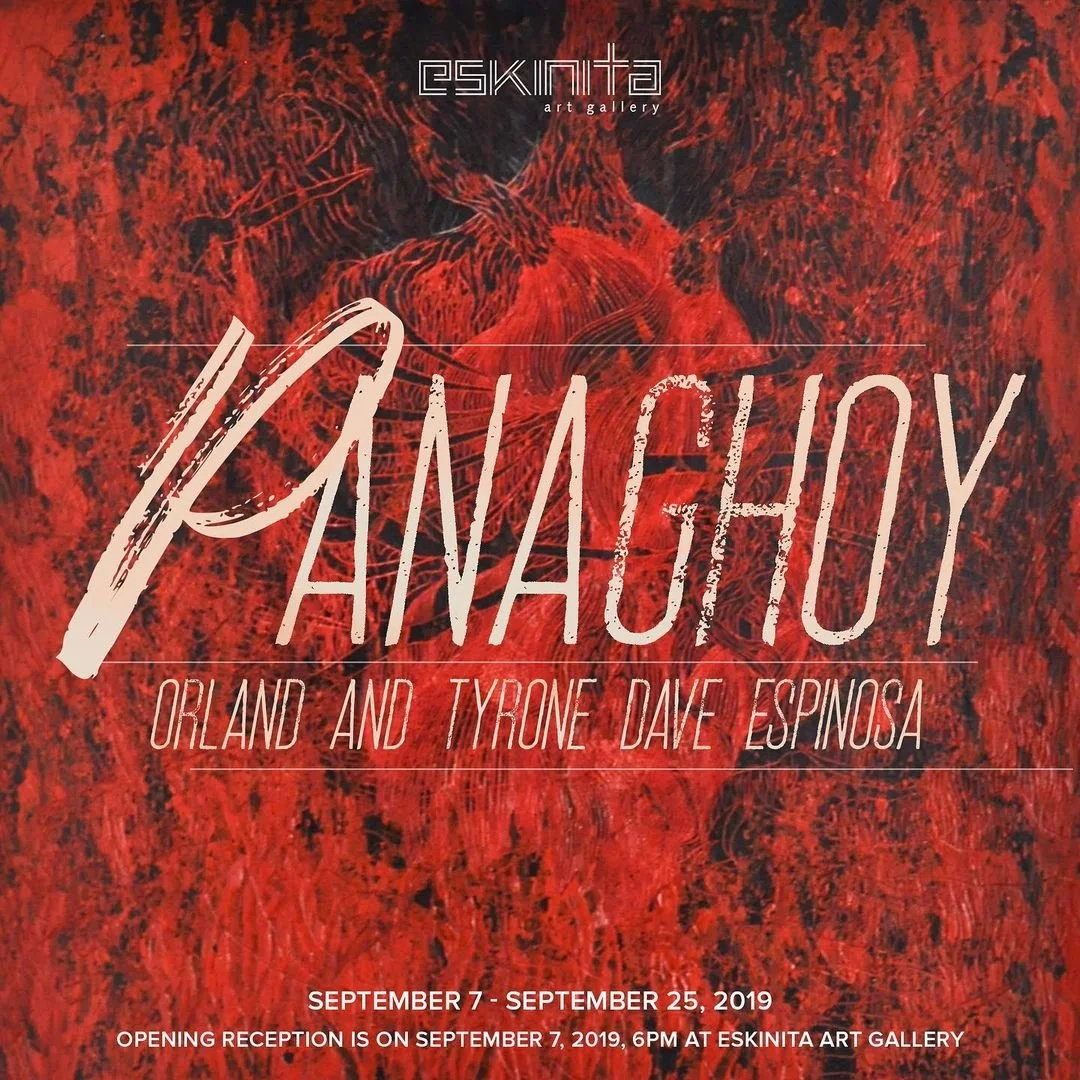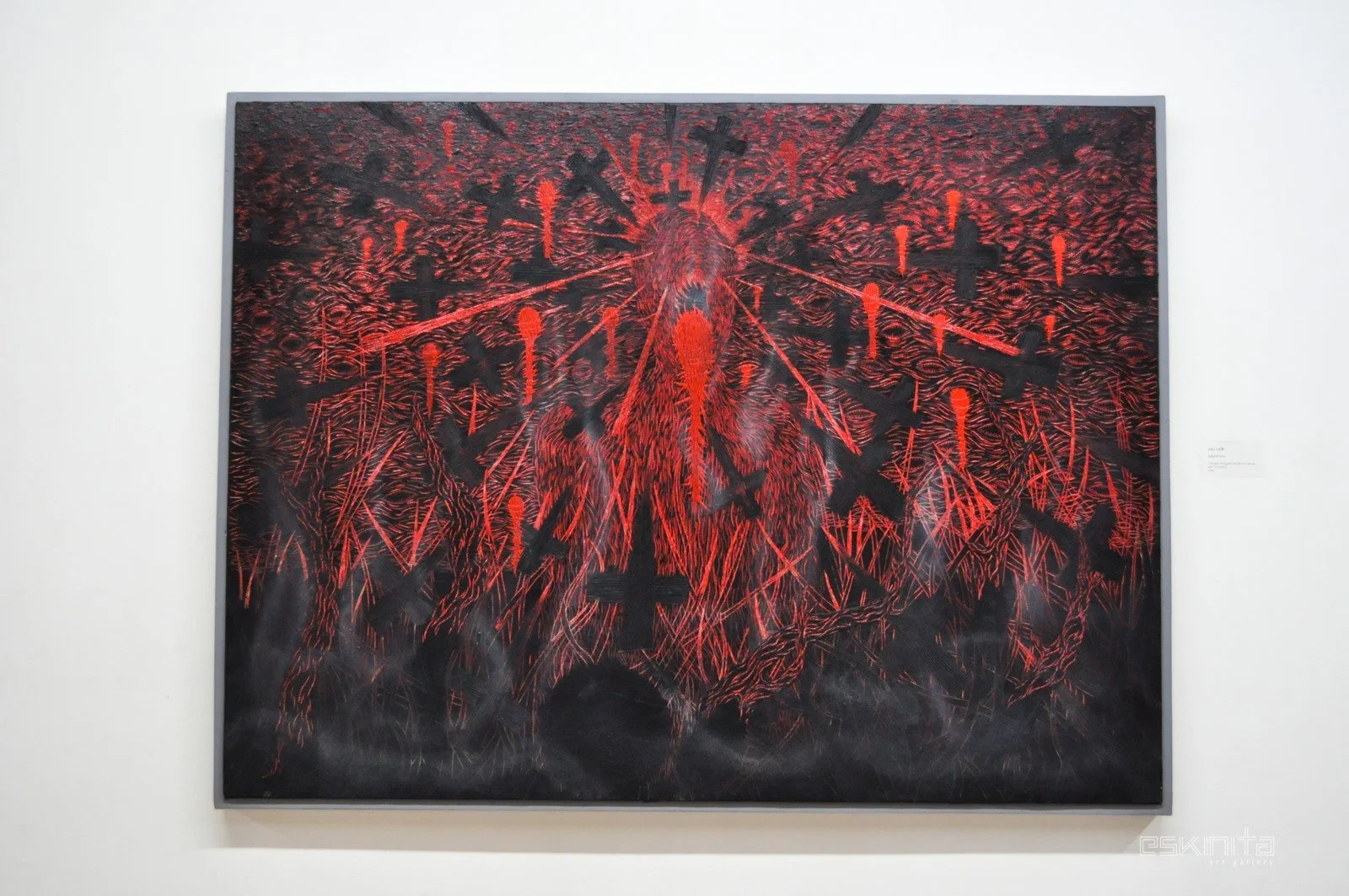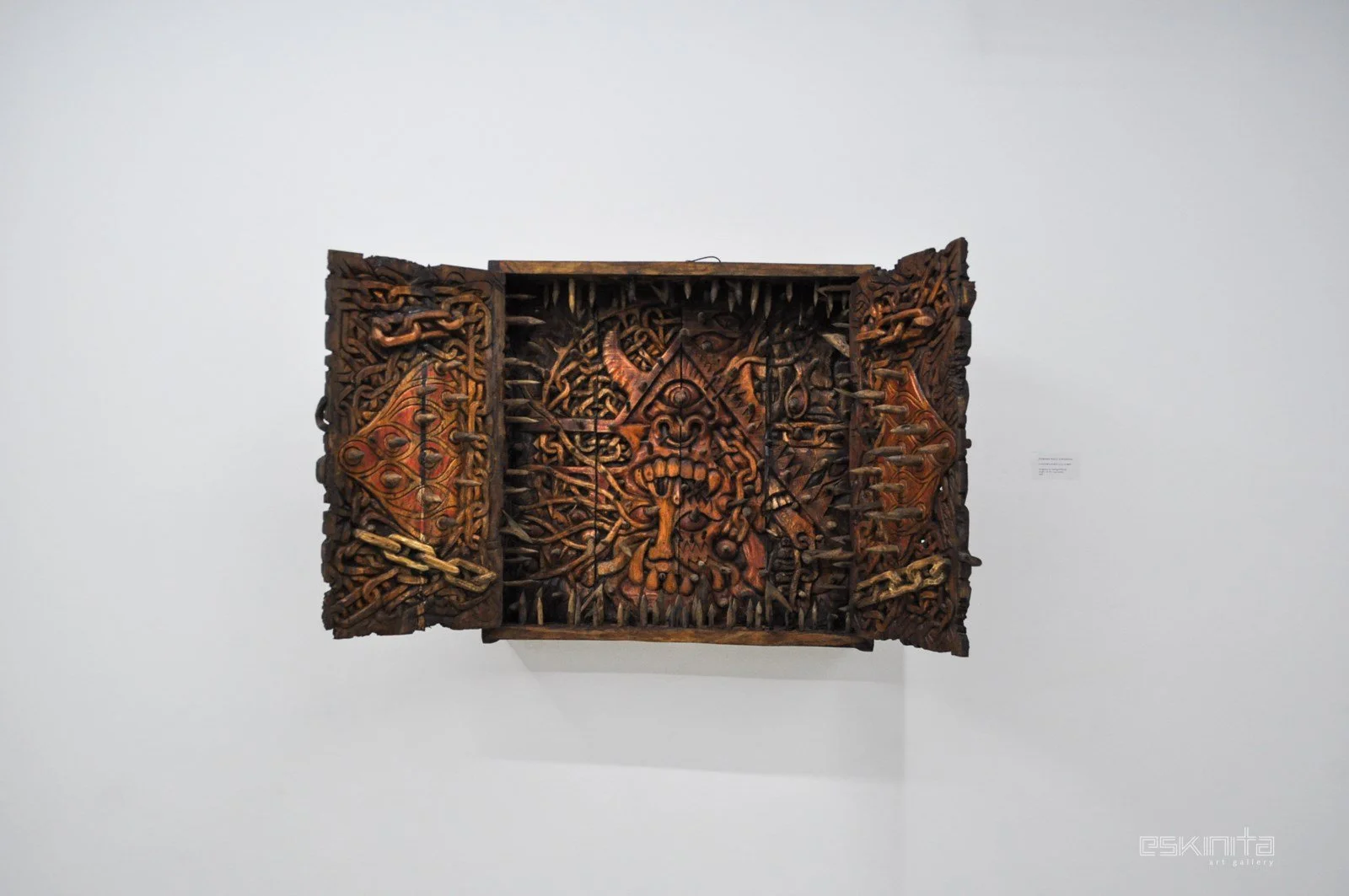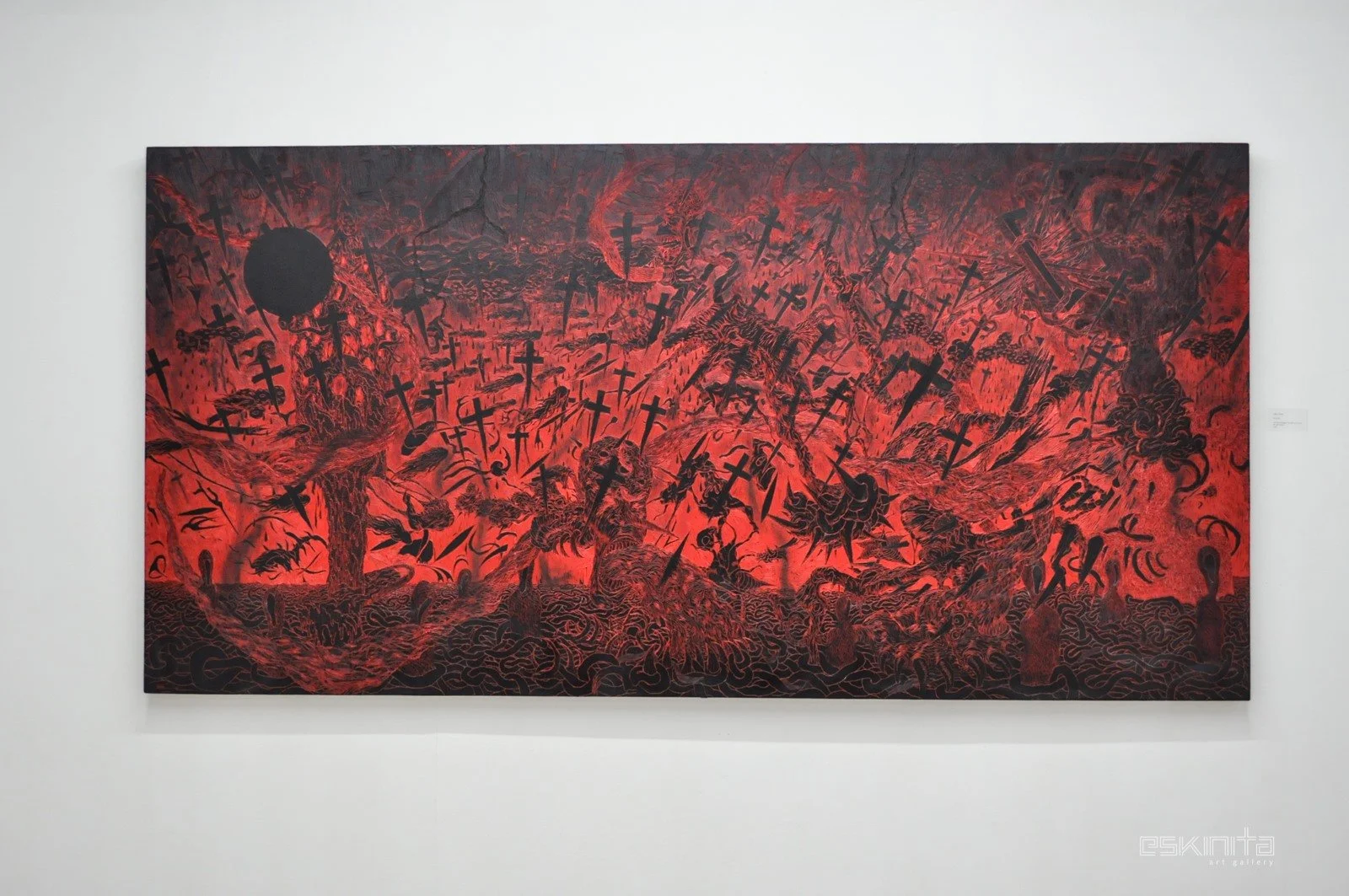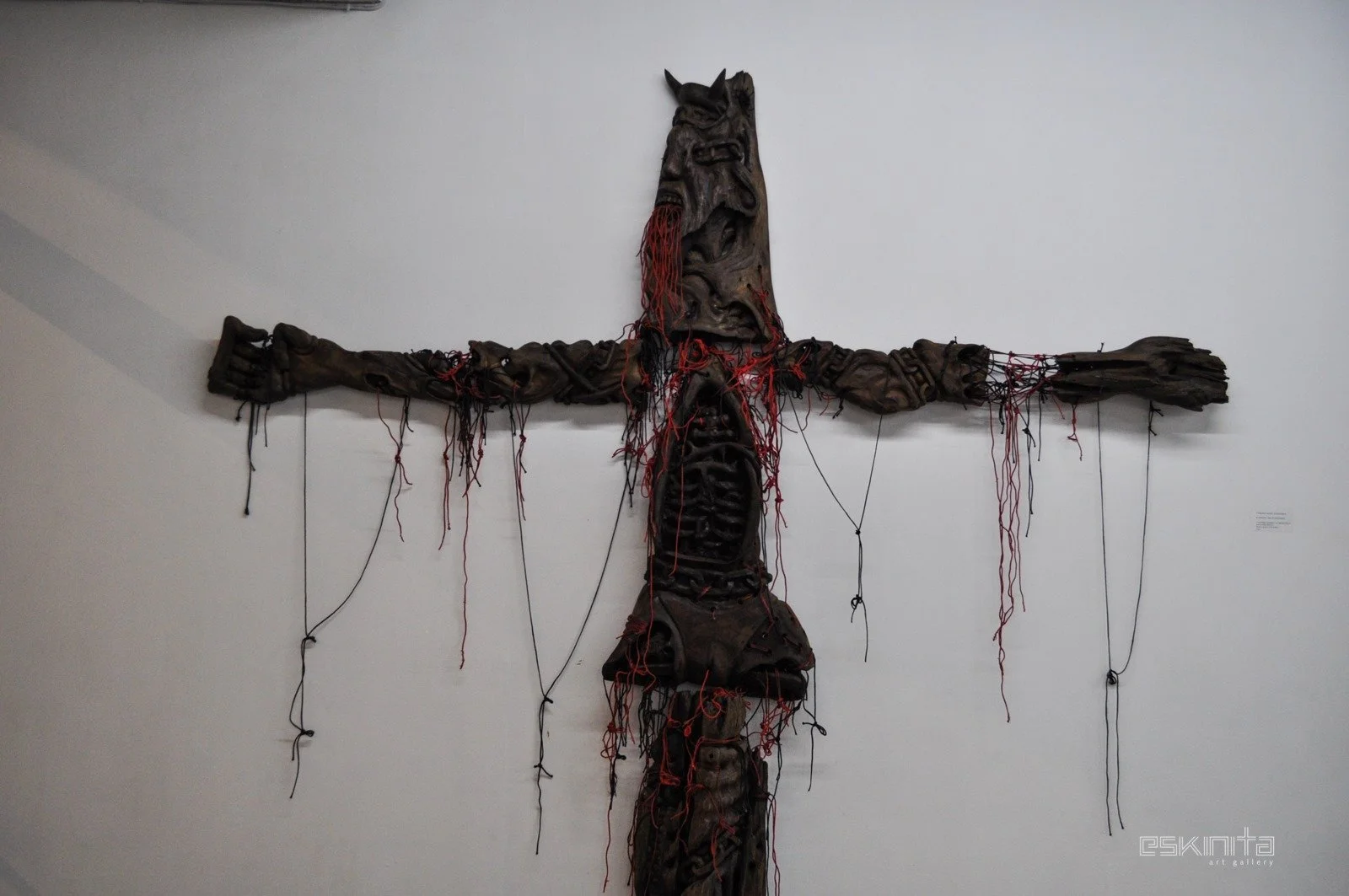
Panaghoy
Orland Espinosa/ Tyrone Dave Espinosa
September 7 to 25, 2019
The Son of man shall send forth his angels, and they shall gather out of his kingdom all things that offend, and them which do iniquity; And shall cast them into a furnace of fire: there shall be wailing and gnashing of teeth. Then shall the righteous shine forth as the sun in the kingdom of their Father. Who hath ears to hear, let him hear.
-Matthew 13:41-42 (KJV)
Back in the days when most of the population were illiterate, the Church turned to iconography in relating God’s word to the masses. Modern audience can only hope to imagine how such images have impacted their medieval counterparts. Not only were miracles coming to life in the form of stained glass and illuminated manuscripts, the more other-worldly biblical narratives are made real through Church-sanctioned imagery, vivid scenes of paradise and damnation etched in the minds of believers and non-believers alike. No need to imagine what would happen if you keep on committing sins. Your fate, depending on your faith, is displayed there for you to see.
In this exhibition, the Espinosa brothers turned their creative practice into preaching devices, interpreting their beliefs into palpable imagery. Between their works, Orland and Tyrone attempt to portray the biblical poetry of suffering; suffering which is temporary albeit a necessary current predicament for the righteous and an eternal finality for the wicked. They make use of thorns and chains to capture the anguish of the soul brought upon either by external forces or self-infliction but always in the context of a salvation that is still a distant aspiration.
Both brothers are adept with the paintbrush and the chisel but for this exhibition, Tyrone opted to work exclusively with sculpture while Orland chose to explore two mediums in his body of works. Their works can be divided into (borrowing a line from a biblical passage) what is and what is to come. For what is, Orland’s paintings titled Hapis and Hignaw makes use of the familiar image of the sacred heart of Jesus which is a flaming heart pierced by a crown of thorns. In Orland’s interpretation, however, this represents the heart of the believer that grows weary when it’s far from the grace of God but becomes resilient when it is filled with God’s grace even amidst trials and tribulations. With Tyrone, on the other hand, the What is is embodied in most of his pieces as in dealing with the state of one’s soul or spiritual resolve. examples of which are the sculptures titled Lamam, Kaluluwa, O Espiritu, and Kaloob-looban sa Loobin that are cabinet-like in construction to represent the inward and outward nature of man.
Striding between what is and what is to come is the Devil, the ultimate enemy of God and everything that is good, and is a key character in the narrative that the artists weave. The Devil’s role is elaborated in the painting by Orland titled Hikbi ng Diablo and in the sculpture of Tyrone titled Ang Matandang Dragon. In both works the Devil is a menacing beast waiting to devour the unrepentant.
The pieces which can be categorized under What is to come take inspiration from what can be described as apocalyptic texts, the story of the events by the end of the world and beyond. Tyrone’s piece titled Gog and Magog with its disembodied twisted limbs and gaping mouths tortured by tightly wound chains represent those who are bound for everlasting punishment. The vision of the apocalyptic landscape is depicted in Orland’s largest painting in the exhibition titled Wakas. The scenario is drenched in red, one can almost feel the sharp spikes of the crucifixes contrasted by the writhing tentacles and malevolent beings overwhelming everything. A circular void can be seen on its skies, underscoring the idea that light has left this world, hope is somewhere else, the only thing to do is pray that yours was a life of righteousness and that it is enough to merit a spot in paradise after.
The artists’ visualization of the journey to salvation is bleak, is filled with suffering, and seems unattainable by mere human effort. Of course, theirs is not the complete story. Going back to Christian Philosophy, where there is darkness, there is light. But in this exhibition the Espinosa brothers used to compel their audience to face the fact that suffering will always be there. The question is, do you want it for life, or forever?
-Ioannis Sicuya

